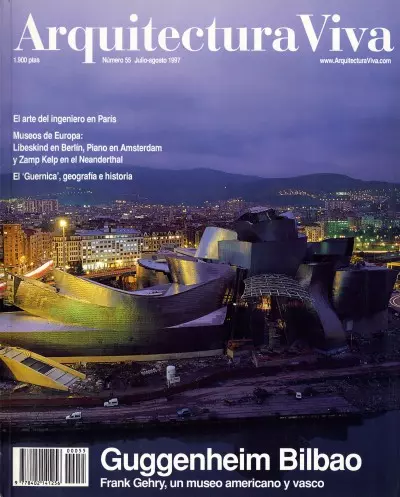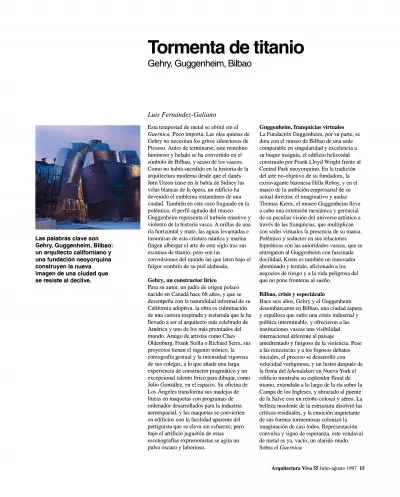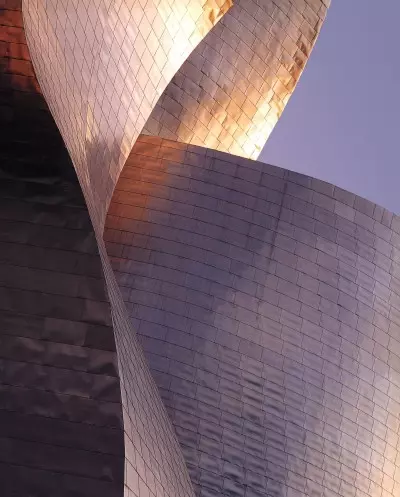Luis Fernández-Galiano
Tormenta de titanioTempest of Titanium
Luis Fernández-Galiano
Frank Gehry, a Conversation
Joseba Zulaika
Architectural ‘Potlatch’
Javier Mozas
Bilbao, ‘Collage-City’
Architecture
César Caicoya
Formal Agreements
From Project to Construction
Joan Sabaté
Transforming Matter
Free Form, Rational Technique
Juan Antonio Ramírez
Bilbao-Babel
The Frozen Explosion
Twelve Architects and a Sculptor
Summary Judgments
Guggenheim Dimensions
Art / Culture
Guillermo Solana
The Guggenheim Galaxy
Antonio Muñoz Molina
A Balkan Past
Antonio Román
Bridges over the Nervion
Jean-Claude Garcias
The Art of the Engineer
Focho's Cartoon
Eero Saarinen
Various Authors
Books
Técnica / Estilo
Daniel Libeskind
Jewish Museum, Berlin
Renzo Piano
Museo de Ciencia, Ámsterdam
Günter Zamp Kelp
Neanderthal Museum, Mettmann
Productos
Curtain Walls
English Summary
Guggenheim Bilbao
Félix de Azúa
Pikasso?








